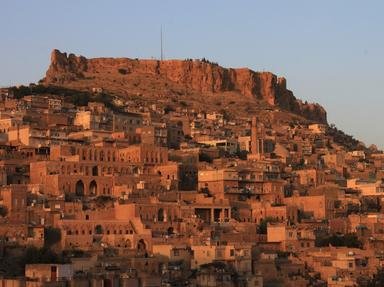Quiz Answer Key and Fun Facts
1. One of the earliest historians to write about the Hanging Gardens was an ancient Greek poet, who included the site on a list that became known as the Seven Wonders of the Ancient World. Who was this historian?
2. According to ancient sources, where was the Hanging Gardens located?
3. Which ancient king is credited with building the Hanging Gardens that was found on the list of the Seven Wonders of the Ancient World?
4. According to the ancient legend, why was the Hanging Gardens built?
5. The name "Hanging Gardens" is perhaps a bit misleading. What is a more accurate way to describe the appearance of the site?
6. According to ancient sources, from where was the water taken to provide irrigation for the Hanging Gardens?
7. Which German archaeologist believed that he had found the site of the Hanging Gardens in the early 1900s?
8. Obviously, irrigating a structure such as the Hanging Gardens would have been a monumental task. Two possible methods of irrigation have been proposed. One suggests the use of a screw pump. What other method of irrigation might have been used?
9. In view of what is known about the history of the area where the Hanging Gardens would have been located, which of the following is the most logical theory regarding the destruction of the structure?
10. Many of the modern articles that exist about the Hanging Gardens suggest that they more likely existed at which Assyrian capital?
Source: Author
ponycargirl
This quiz was reviewed by FunTrivia editor
bloomsby before going online.
Any errors found in FunTrivia content are routinely corrected through our feedback system.


